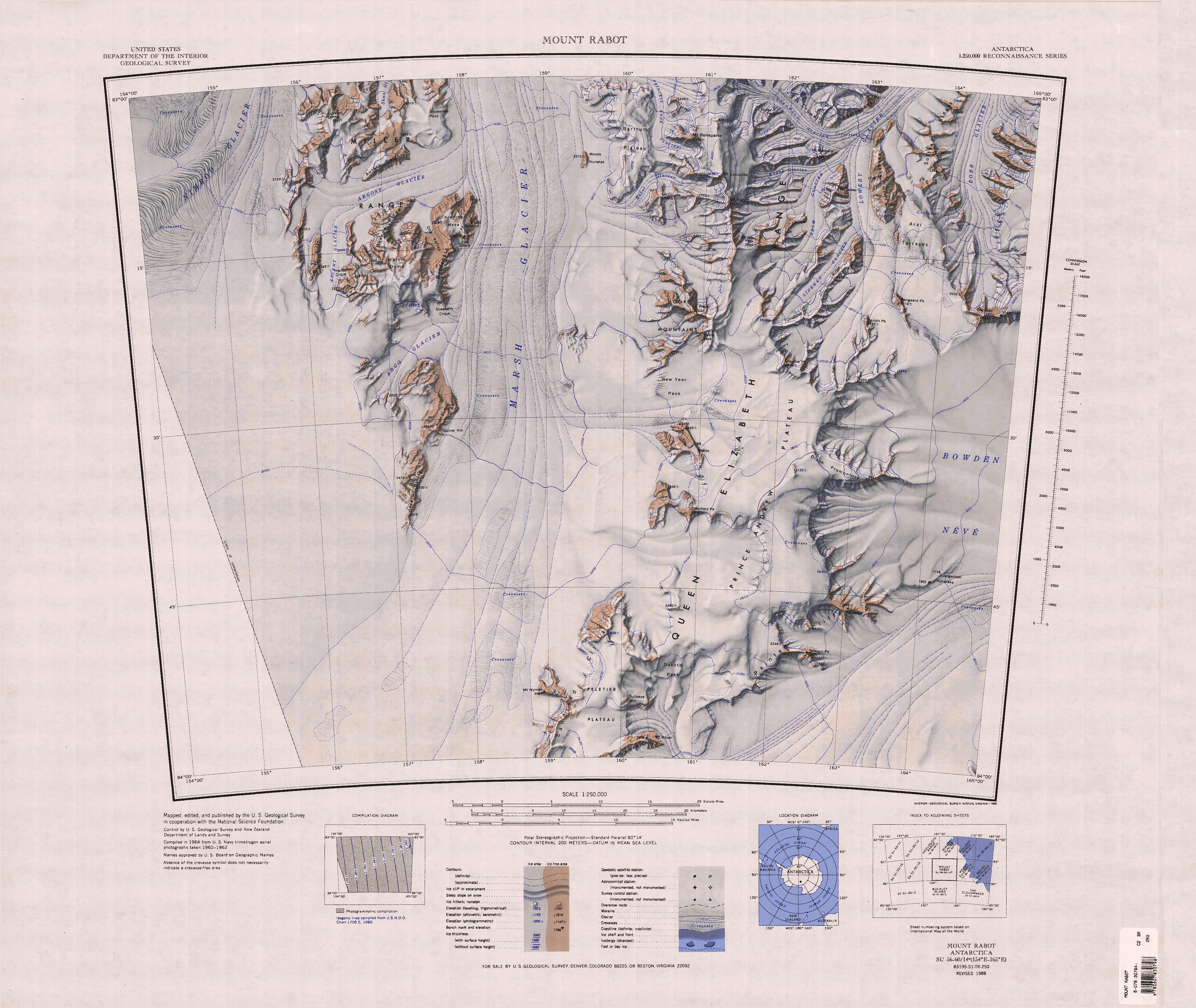Ārai Terraces on:
[Wikipedia]
[Google]
[Amazon]
The Ārai Terraces () are a series of crevassed terraces and icefalls close southward of Fazekas Hills, near the head of
 The Ārai Terraces are in the eastern Queen Elizabeth Range to the northeast of the
The Ārai Terraces are in the eastern Queen Elizabeth Range to the northeast of the
Lowery Glacier
Lowery Glacier () is a glacier about long, which flows north from Prince Andrew Plateau, Antarctica, along the east side of the Queen Elizabeth Range to enter Nimrod Glacier. It was named by the New Zealand Geological and Topographical Survey Ex ...
.
Name
The Ārai Terraces were so named by theNew Zealand Geological Survey Antarctic Expedition The New Zealand Geological Survey Antarctic Expedition (NZGSAE) describes a series of scientific explorations of the continent Antarctica. The expeditions were notably active throughout the 1950s and 1960s.
Features named by the expeditions 1957 ...
(NZGSAE; 1959–60) because they are a natural barrier to sledge travel which the party was unable to traverse, ''ārai'' being the Māori
Māori or Maori can refer to:
Relating to the Māori people
* Māori people of New Zealand, or members of that group
* Māori language, the language of the Māori people of New Zealand
* Māori culture
* Cook Islanders, the Māori people of the C ...
term for barrier.
Location
 The Ārai Terraces are in the eastern Queen Elizabeth Range to the northeast of the
The Ārai Terraces are in the eastern Queen Elizabeth Range to the northeast of the Prince Andrew Plateau
Prince Andrew Plateau () is an ice-covered plateau, about long and wide, lying south of Mount Rabot in the Queen Elizabeth Range of Antarctica.
Exploration and name
The Prince Andrew Plateau was named by the New Zealand Geological Survey Anta ...
, east of the Moore Mountains The Moore Mountains () are a small but conspicuous group of mountains just north of New Year Pass in the Queen Elizabeth Range in Antarctica. They were observed in 1957 by the New Zealand southern party of the Commonwealth Trans-Antarctic Expeditio ...
and Mount Rabot
Mount Rabot () is a mountain, high, standing southeast of Mount Lecointe in the Queen Elizabeth Range in Antarctica.
Name
Mount Rabot was discovered and named by the British Antarctic Expedition (BrAE; 1907-09).
Charles Rabot was editor of '' ...
.
The Linehan Glacier
Lowery Glacier () is a glacier about long, which flows north from Prince Andrew Plateau, Antarctica, along the east side of the Queen Elizabeth Range to enter Nimrod Glacier. It was named by the New Zealand Geological and Topographical Survey E ...
and Lowery Glacier
Lowery Glacier () is a glacier about long, which flows north from Prince Andrew Plateau, Antarctica, along the east side of the Queen Elizabeth Range to enter Nimrod Glacier. It was named by the New Zealand Geological and Topographical Survey Ex ...
define the western boundary, and the Robb Glacier
Robb Glacier () is a glacier about 40 nautical miles (70 km) long, flowing from Clarkson Peak north along the east side of Softbed Ridges to the Ross Ice Shelf at Cape Goldie. Named by the expedition after Murray Robb, leader of the New Ze ...
the eastern boundary.
Features around the Ārai Terraces include Bengaard Peak to the south, Softbed Ridges, Fazekas Hills and Mount Oona to the north.
Features
Bengaard Peak
. Prominent rock peak, high, located south of Fazekas Hills, on the east side of Queen Elizabeth Range. Named by the United StatesAdvisory Committee on Antarctic Names
The Advisory Committee on Antarctic Names (ACAN or US-ACAN) is an advisory committee of the United States Board on Geographic Names responsible for recommending commemorative names for features in Antarctica.
History
The committee was established ...
(US-ACAN) for Hans J. Bengaard, United States ArmyRP ionospheric scientist at Little America V, 1957.
Softbed Ridges
. A series of parallel rock ridges interspaced by small snow-covered valleys, the whole trending north–south for about and forming a portion of the divide between Lowery Glacier and Robb Glacier. The name was applied in about 1960 by New Zealand parties working in the area.Fazekas Hills
. Rugged, ice-free hills trending in a north–south direction for just east of Mount Oona on the east side of Lowery Glacier. Named by US-ACAN for Stephen P. Fazekas, Sr., United States ArmyRP meteorologist at South Pole Station, 1958.Mount Oona
. A mountain, high, at the north end of the ridge between Helm Glacier and Lowery Glacier. Named by US-ACAN for Henn Oona, United States ArmyRP aurora scientist at South Pole Station, 1964.References
Sources
* * *{{Include-USGov , agency=United States Geological Survey Crevasse fields of the Ross Dependency Icefalls of the Ross Dependency Shackleton Coast Landforms of the Ross Dependency